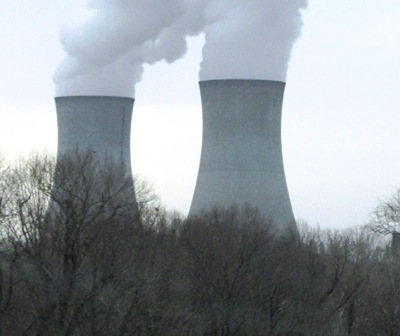In December 1984 Stanley J. Watras was a construction engineer at the Limerick nuclear power plant in Pottstown, Pennsylvania. Workers at the site were subject to radiation screening as they left the plant on a daily basis. One day Mr. Watras happened to enter the plant through the EXIT portal and set off the radiation alarms of the monitoring devices.
At that time the Environmental Protection Bureau (EPA) Bureau received a telephone call from the Health Physicist at the Limerick site informing the EPA that a construction worker at the plant under construction, that housed no radioactive material yet, was setting off alarms when he attempted to enter the plant. Mr Watras was indeed radioactive but it was not from exposure at the plant.
Perplexed by the fact that Mr. Watras was triggering radiation alarms as he entered the facility, representatives from the utility performed a radiation survey at the Boyertown, PA home of Mr. Watras and found excessively high levels of radon throughout his home. They measured radiation levels almost 700 times higher than the maximum level considered safe for human exposure. The Watras home tested at 2,700 picocuries per liter, the prescribed “safe” level is at or below 4 picocuries per liter. This level of exposure to radon was estimated to be the equivalent of smoking a several hundred packs of cigarettes on a daily basis.
The Watras family moved out of the house immediately, while the problem was being researched. After Mr. Watras and his family left their home the EPA and the state of Pennsylvania turned the home into a laboratory for long-term measurement of radon and evaluation of radon mitigation techniques. After many months, they reduced the radon concentration to an acceptable level, and the family was able to return. After installing a radon reduction system, radon levels in the home tested below 4 picocuries per liter.
And so began the EPA’s involvement in radon measurement and monitoring of residential dwellings. The EPA had to come up with an acceptable level for indoor radon, and settled on 4 picocuries per liter. A picocurie is a measurement of radioactivity related to the rate of decay. In 1986 it was established that at a level of 4 picocuries per liter, the vast majority of homes could economically be reduced to an acceptable level of exposure. This was not based on a “safe level of radon”, as it was a political and economic decision. In a perfect world the level would be zero.
Radon, produced by decaying uranium, is common in rock and soil. It is particularly prevalent in coastal Maine and along the Reading Prong, a geological formation rich in uranium extending through eastern Pennsylvania, northern New Jersey and parts of New York. Odorless, the gas cannot be detected except by special devices, and its occurrence is so frequent and so unpredictable that the EPA recommends that every house in America be tested.
The highest radon level ever recorded in Pennsylvania is 3,715 picocuries per liter was discovered December 2014 in a house in Upper Saucon Township, Lehigh County.
Wallingford PA Real Estate – Wallingford, PA 19086


